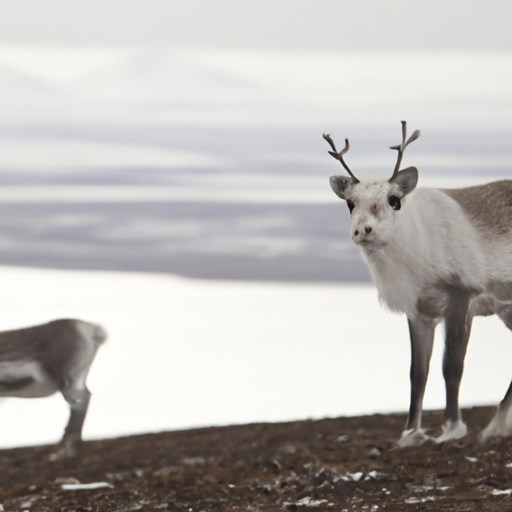 Introduction:
Introduction:
The tundra, a vast and unforgiving biome characterized by low temperatures, strong winds, and a short growing season, poses immense challenges for the survival of both flora and fauna. Despite these extreme conditions, numerous animal species have successfully adapted to this unique habitat. This article explores the remarkable strategies employed by animals to thrive in the tundra, from physiological adaptations to behavioral modifications.
Physiological Adaptations:
1. Insulation: Thick fur, feathers, or blubber act as effective insulators, providing animals with a protective layer against the biting cold. For example, the Arctic fox possesses a dense double-layered coat that changes color with the seasons, aiding camouflage and temperature regulation.
2. Small Appendages: Many tundra-dwelling animals have reduced ear size, short tails, and compact bodies to minimize heat loss. This adaptation is evident in the Arctic hare, which has relatively smaller ears and appendages to reduce surface area exposed to cold air.
3. Counteracting Heat Loss: To prevent frostbite, animals have evolved specialized circulatory systems that minimize heat loss. The polar bear, for instance, has a countercurrent heat exchange system in its limbs, which ensures that warm blood returning from extremities warms the cold blood flowing towards them.
4. Enhanced Metabolism: Certain animals, such as the collared lemming, have an exceptionally high metabolic rate. This allows them to maintain body temperature even during periods of reduced activity or hibernation, ensuring survival in the harsh winters.
Behavioral Adaptations:
1. Migration: Many tundra animals undertake long-distance migrations to escape harsh winter conditions and find abundant food resources. Caribou, for example, undertake one of the world’s longest land migrations, traveling hundreds of miles each year in search of suitable grazing areas.
2. Hibernation: To conserve energy during the winter months, some animals hibernate. Ground squirrels, such as the Arctic ground squirrel, dig deep burrows where they spend several months in a state of torpor, lowering their metabolic rate and surviving on stored fat reserves.
3. Group Living: Social behavior is common among tundra-dwelling animals as it provides several advantages. By huddling together, muskoxen and reindeer share body heat, reducing heat loss and increasing chances of survival. Group living also offers protection against predators and facilitates cooperative foraging.
4. Adapted Feeding Strategies: Tundra animals, like the snowy owl, have developed specialized hunting techniques to capitalize on the limited food availability. These owls can detect prey under the snow, swooping down to capture small mammals beneath the surface. Similarly, the Arctic fox changes its diet based on seasonal availability, switching from lemmings to berries and carrion when prey is scarce.
Ecological Relationships:
1. Predator-Prey Dynamics: The tundra ecosystem is characterized by complex predator-prey relationships. Species like the Arctic wolf, polar bear, and snowy owl have evolved to become apex predators, while herbivores such as muskoxen and reindeer have developed strategies to evade predation, including vigilance and group defense.
2. Mutualistic Relationships: Some tundra animals have mutualistic associations that benefit both parties involved. The relationship between the musk ox and the oxpecker bird is an example of mutualism. The bird helps remove parasites from the ox’s fur, while the ox provides the bird with a safe feeding ground and protection.
3. Commensalism: Certain animals, such as Arctic foxes, have adapted to scavenge carcasses left behind by larger predators. This behavior allows them to exploit food resources without direct competition or confrontation.
Conclusion:
The tundra biome presents a challenging environment for animals, demanding incredible adaptations for survival. From physiological changes that combat extreme cold to behavioral strategies that optimize resource utilization, animals have developed a range of remarkable adaptations. Understanding these adaptations helps shed light on the delicate balance of life in the tundra and the interconnectedness of its diverse inhabitants.
